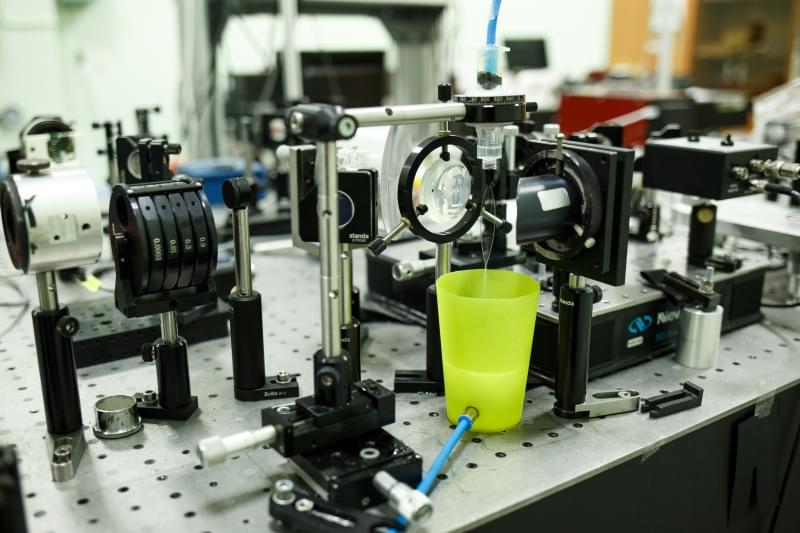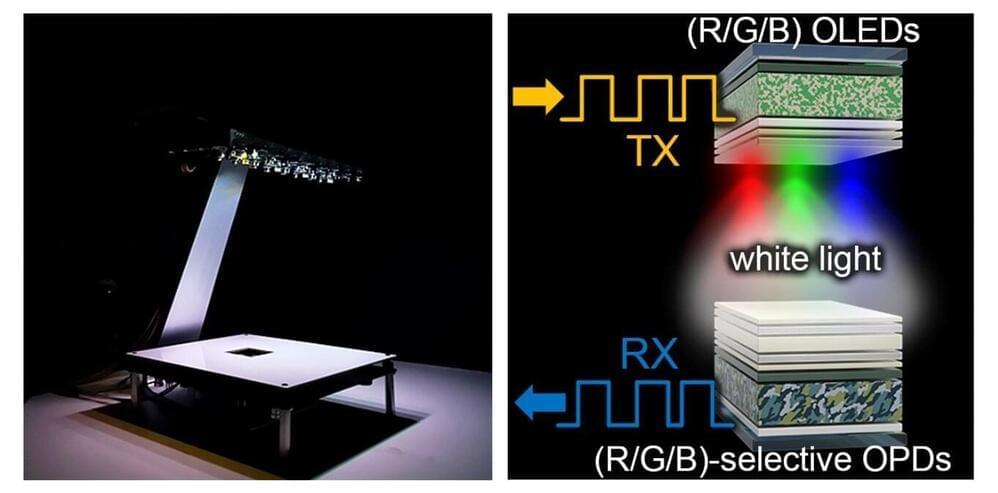Their “AI” was considered a threat to security.



Polar liquids, such as water, are powerful absorbents of electromagnetic waves in the terahertz range. For that reason, they were never considered as potential THz radiation sources. Last year, researchers from ITMO University and the University of Rochester proved that liquid-based radiation sources can be no less effective than traditional ones. In their new study, the staff of ITMO University’s Laboratory of Femtosecond Optics and Femtotechnologies present their research on the generation of THz radiation in liquid jets of various kinds. In the future, these findings can be used to create new alternative sources of THz radiation. The research was published in Optics Express.
Terahertz technologies: spectroscopy, security, biomedicine, and non-destructive diagnostics
Terahertz radiation is a type of electromagnetic radiation located within the frequency spectrum between infrared and radio. It passes well through a variety of materials, such as wood, plastic, and ceramics.

LONDON (AP) — U.K. health officials on Monday urged millions of parents to book their children for missed measles, mumps and rubella shots during a sharp increase in the number of measles cases and the lowest vaccination rates in a decade.
The National Health Service is launching a publicity campaign after figures showed there were about 250 confirmed measles cases in parts of England last year. Most cases were in children under 10 years old.
The combined measles, mumps and rubella, or MMR, vaccine is offered in the U.K. in two doses to all children, first at 12 months and then again at 3 years. Vaccination rates have dropped to about 85% nationally, and far lower in parts of London, according to U.K. Health Security Agency chief executive Jenny Harries.

Researchers have created a novel technology utilizing meta-optical devices for thermal imaging. This method offers more detailed information about the objects being imaged, potentially expanding thermal imaging applications in autonomous navigation, security, thermography, medical imaging, and remote sensing.
“Our method overcomes the challenges of traditional spectral thermal imagers, which are often bulky and delicate due to their reliance on large filter wheels or interferometers,” said research team leader Zubin Jacob from Purdue University. “We combined meta-optical devices and cutting-edge computational imaging algorithms to create a system that is both compact and robust while also having a large field of view.”
In Optica, Optica Publishing Group’s journal for high-impact research, the authors describe their new spectro-polarimetric decomposition system, which uses a stack of spinning metasurfaces to break down thermal light into its spectral and polarimetric components. This allows the imaging system to capture the spectral and polarization details of thermal radiation in addition to the intensity information that is acquired with traditional thermal imaging.



A Trail of Bits blog recently exposed this vulnerability.
Today’s revelations unveil a creative chink in various GPUs (Apple, Qualcomm, AMD), enabling substantial data pilfering from graphics card memory.

New method captures better thermal details, helpful for self-driving, identifying materials, and enhancing security measures.
Scientists have created a novel technology using meta-optical devices to conduct thermal imaging. Like a pair of glasses, this device does thermal imaging and can also identify the objects being imaged.
This expands the potential applications of thermal imaging in various fields, including security, thermography, medical imaging, and remote sensing.
“Our method overcomes the challenges of traditional spectral thermal imagers, which are often bulky and delicate due to their reliance on large filter wheels or interferometers,” said Zubin Jacob, research team leader from Purdue University.

Li-fi, a communication technology harnessing visible light for data transmission, has a potential to surpass Wi-Fi’s speed by more than 100 times and boasts a high bandwidth, facilitating the simultaneous transmission of copious information. Notably, Li-fi ensures robust security by exclusively transmitting data to areas illuminated by light.
Most important, it capitalizes on existing indoor lighting infrastructure, such as LEDs, eliminating the need for separate installations. However, implementing visible light communication (VLC) in practical lighting systems poses an issue of diminished stability and accuracy in data transmission.
Recently, a collaborative team led by Professor Dae Sung Chung, from the Department of Chemical Engineering at Pohang University of Science and Technology (POSTECH), with researcher Dowan Kim, Professor Dong-Woo Jee and Hyung-Jun Park from the Department of Intelligence Semiconductor Engineering at Ajou University, and Professor Jeong-Hwan Lee from the Department of Materials Science and Engineering at Inha University, succeeded in utilizing indoor lighting for wireless communication by reducing light interference with a novel light source. Their findings were published in Advanced Materials.